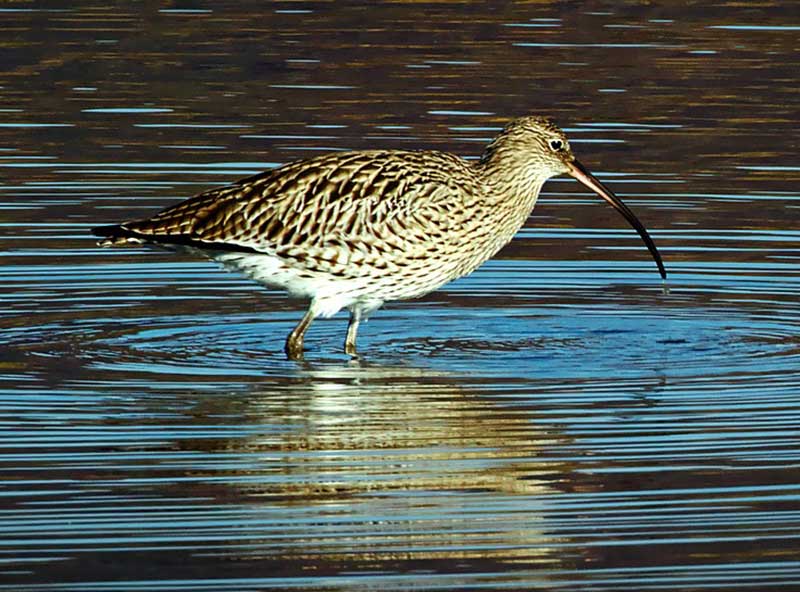[et_pb_section bb_built=”1″ fullwidth=”off” specialty=”off”][et_pb_row][et_pb_column type=”3_4″][et_pb_post_title _builder_version=”3.17.6″ comments=”off” featured_image=”off” /][et_pb_text _builder_version=”3.17.6″]

[/et_pb_text][et_pb_text _builder_version=”3.17.6″]
As we approach ‘World Curlew Day’ on Sunday, we have the chance to raise awareness of the plight of the iconic, bent-beaked wader and celebrate its links to our communities and cultural past.
Most will have heard or read about the bird’s struggles; indeed, the RSPB have said the curlew should be a top conservation concern.
The UK is home to around 26 per cent of the world’s breeding curlew, yet they have suffered a population crash of 43 per cent since the mid-1990s.
The shooting community is proud to offer a safe space and breeding home for this threatened species, with up to five times more waders found on managed grouse moors.
I have seen many curlew spend their winters along our coastal estuaries and then often breed across our uplands or migrate across to Europe to try their luck there.
[/et_pb_text][et_pb_text _builder_version=”3.17.6″]
Yet, until last summer, I had never considered the very personal relationship other shooters have with the curlew throughout the year.
Collin Teago, our Lindisfarne wildfowling warden, stood on top of a grouse moor, watching children learning about conservation from passionate gamekeepers and said…“I have never seen a curlew chick until today”.
Now Collin is a fantastic font of bird knowledge, having spent more than 16 years as the Lindisfarne warden. Indeed his bird counts form a vital piece of Natural England’s National Nature Reserve monitoring. Yet his relationship with the curlew is a winter tale based around the cold North Sea and biting winds, watching up to 500 curlew at a time feeding across the mud.
The wildfowlers at Lindisfarne were involved with the very start of what is now the National Nature Reserve, ensuring people understood the area’s conservation value so it was not swallowed up in the many industrial developments along our coastline. So the wildfowler-curlew relationship has a great deal of history.

On the same grouse moor in the North York moors last spring, chatting to Michael (one of the grouse keepers) about curlew day and the BASC breeding curlew survey, he said “I love seeing and hearing curlew, when I am out and about…but they are everywhere, why do you want me to record them?”
This conservation priority species, with a threatened world population, is normal and abundant for Colin and Michael. Indeed, perhaps the same birds Colin has spent his career protecting on the coast are handed across to Michael in the summer, who in turn provides that precious open moorland and vital predator control to give the curlew a decent breeding opportunity.
Until last summer, Colin and Michael had never met, although they may have been conserving some of the same curlew for years.
I am not suggesting the future of the curlew is straightforward, and projects like the BASC scheme to monitor and understand their movements are essential. But we can safely say that without the Colins and Michaels of this world, the curlew would be in a much worse situation.
[/et_pb_text][et_pb_cta _builder_version=”3.17.6″ title=”Find out how you can get involved and help us ” button_text=”Click here ” button_url=”https://0ld.basc.org.uk/blog/conservation/basc-joins-appeal-ahead-of-world-curlew-day/” background_image=”https://0ld.basc.org.uk/wp-content/uploads/2019/04/curlewcoa-1.jpg” text_orientation=”left” custom_button=”on” button_text_color=”#ffffff” button_bg_color=”#3d6ad1″ button_border_color=”#ffffff” button_use_icon=”off” /][/et_pb_column][et_pb_column type=”1_4″][et_pb_sidebar _builder_version=”3.17.6″ area=”sidebar-1″ orientation=”right” /][/et_pb_column][/et_pb_row][/et_pb_section]
